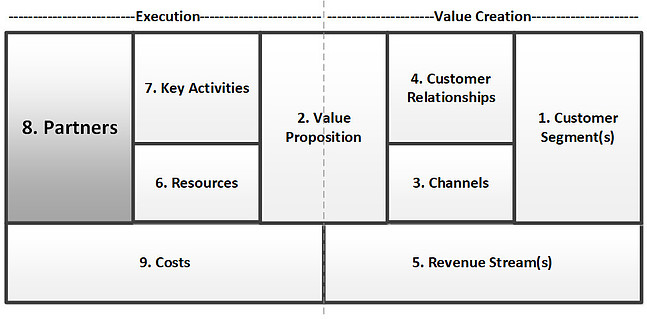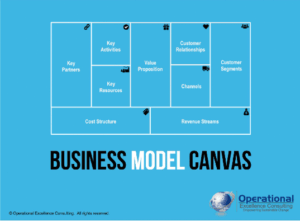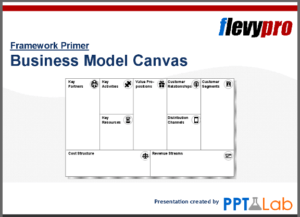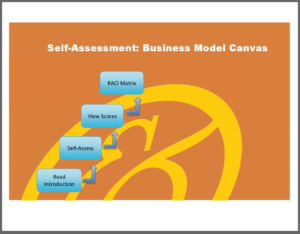Identifying Key Partners that fit into a business model can be an effective way to fill operational gaps. This post explores how Key Partners fit into the business model canvas, strategic considerations for partnering, and aspects of partnering that present challenges and opportunities on projects.
Does an Organization Need Partnerships?
 ‘Partners’ occupies a clear and distinct position on the execution side of the business model canvas. Following Key Activities and Key Resources on the canvas, it is the final piece that will determine the cost structure.
‘Partners’ occupies a clear and distinct position on the execution side of the business model canvas. Following Key Activities and Key Resources on the canvas, it is the final piece that will determine the cost structure.
It is also the final piece that requires evaluation and decisions as to what will make up the value chain of the business for delivering on its value proposition.
The Business Model Framework is largely credited to Alexander Osterwalder and Strategyzer. To supercharge your understanding of business models, I recommend his book, “Business Model Generation: A Handbook for Visionaries, Game Changers, and Challengers”.
Why might a business need partners? Here are a few compelling reasons for partnering to consider:
- Optimize Resources – It probably makes sense to build and maintain some resources in house, but to source others externally for an optimum configuration. Some resources may be temporary, difficult to find, or part-time. Others may solve complexities that would be difficult to accomplish inside the company.
- Achieve economies of scale – Some inputs to the product or service must reach economies of scale. Also, scarce resources may need to be allocated strategically to focus on achieving desired economies of scale.
- Risk mitigation – Partnering can help avoid a variety of risks. One is in losing focus on developing a core competency. Another is in overreaching with capital investment commitments. Yet another is overextending in terms of personnel development.
- Unique resources – Certain specialized skills, if they are not to be part of the core value proposition of the company, may be better to source on the outside.
- Acquisition of certain functions – Certain functions are better outsourced because they are a distraction from the core business functions. They might include construction of facilities, maintenance, some accounting and bookkeeping functions, and system implementation.
With so many compelling reasons to consider partnering, you might simply ask, “Where do we need partnerships?” The answers will be driven by needs of the business. They will likely be based upon the justifications or driving reasons above.
Types of Key Partners on the Business Model Canvas

Key Partners generally fall within the following four types of relationships, starting with the most common:
- Buyer-supplier relationships – These are relationships with suppliers of inputs, or with distributors that will aid with buyer relationships. These usually evolve out of strategic analysis considering buyer and supplier dynamics in the industry as in Porter’s Five Forces framework.
- Strategic alliances between non-competitors – Services of partners may fill important parts of the value chain, such as manufacturing and customer support. They may also involve sourcing a key ingredient to the product, where the partner has a supplier relationship in place.
- Joint Ventures to develop new businesses – Small and large businesses will often benefit from joint ventures where each brings a core competency to the table. For example, one business might do manufacturing where another might do marketing and sales. This is common in the pharmaceutical industry.
- Co-opetition – Occasionally direct competitors may even team up on some aspect of the business. For example, there may be an element of the service that requires the volume of both companies to reach critical mass for economies of scale. As with strategic alliances, it could be that direct competitors may benefit from teaming up for volume purchases on certain inputs.
These are generally the four types of partnerships that are found in businesses. The next section explores key best practices for implementing successful partnerships.
How to Implement Successful Partnerships
 The following are six ‘rules of the road’ for succeeding with partnering relationships:
The following are six ‘rules of the road’ for succeeding with partnering relationships:
- Selecting Win-Win partnerships – A partnership will only succeed if both partners benefit from it. Seek partnerships where that is very clear from the start.
- Defining Expectations – There will be shared responsibilities with partnerships. It is best to define what each expects and is willing to commit to. It is also important to do a ‘gut test’ to determine if the expectations are realistic.
- Solid Partnership Agreements – With good strategic drivers, selection, and expectations in place, manage the risk of the partnership with a strong legal agreement.
- Impact on existing clients or customers – Be aware of how the partnership might affect the customers of each partner. Consider what conflicts might arise, even from ‘cultural’ factors not directly related to the partnership itself.
- Measuring partnership performance – What results are each of the partners realizing from the partnership? It is helpful for both parties to collaboratively and transparently monitor how closely the partnership is delivering on the objectives.
- Suspending partnerships – Partnerships do not last forever. Often they are a function of need at the team, and as the business matures, certain partnerships are no longer needed.
Partnerships evolve through phases. It is best to anticipate what might change through these phases and put some structure in place to handle each potential situation.
Business Model Canvas Key Partners and Strategy
The choice of Key Partners in a business model is a very strategic consideration.
—————————————-
I recommend these strategy resources on FlevyPro (paid links):
| Business Model Canvas 140-slide PowerPoint deck and supporting PDF  |
| Business Model Canvas 22-slide PowerPoint deck  |
| Business Model Canvas: Guide, Process and Tools 43-slide PowerPoint deck  |
| Business Model Canvas – Implementation Toolkit Excel workbook and supporting ZIP  |
—————————————-
Here are five important strategic factors to evaluate:
- Think about your core skills, competencies, strengths, and value chain. Partnering needs to be in alignment with the organization’s primary strategic thrust.
- Often companies follow #1 – and partner or outsource everything else. This is a good strategically driven approach and can often result in the most efficient way to allocate resources.
- Think carefully about the strategic drivers – the why. What are the objectives of the potential partnership, and what is the measurable potential value for each partner?
- Partnerships can change over the course of a business life cycle. Is there a way out if things change or are not working well?
- How do the drivers of the partnership relate back to natural industry forces, as framed in Porter’s five forces?
Partnering is an area for serious strategic probing and questioning.
Impact of Partnering on Project Management

Here are two major items about partnerships to consider from a project management perspective:
1. Analyze partnering within your organizational context
Think about partnering by taking the big picture, organizational perspective. Does the business have or need partners? Who are they, and do they interface with the project in any way? You actually may identify a gap going through this process.
Partnering can also influence who the stakeholders are, who potential suppliers are, standards for how things need to be done, and special considerations for how things might be effected. Think about the whole organizational ecosystem, which includes partners.
Organizational partnerships may also influence the objectives of the project. Choose appropriate metrics to determine progress; they could very well incorporate some aspect of partnering the organization is undertaking.
2. Partnering and your project
Executing the project itself may benefit from partnering. Here are some questions to consider:
-
- Could there be a need to partner with another consulting firm with specialized skills?
- Could you use a partner with staff augmentation capabilities to help fill gaps on the project team?
- Where will you acquire certain materials and services? This is a similar question to that asked in the organization perspective and will probably borrow from that answer.
- Who is financing the project? Sometimes projects are being sponsored by two partnering organizations!
—————————————-
I recommend these PM templates (paid link):

—————————————-
Projects lie at the interface of may strategic initiatives by the organizations, and many will include partnering.
You can quickly and conveniently work through the Key Partners and other components of the Business Model Canvas with the Lucidchart Business Model Canvas template (Try for free) – recommended!
Conclusion and Further Resources
Partnering is a viable and critical piece of an effective business model.
What partnering challenges have you experienced in your organization and on your projects, and how did you handle them?
To supercharge your understanding of business models, I recommend “Business Model Generation: A Handbook for Visionaries, Game Changers, and Challengers” by Alexander Osterwalder.
I recommend the following ‘startup perspective’ overview video, “Business Model Canvas Partners”, by Steve Morris of StartupSOS.
